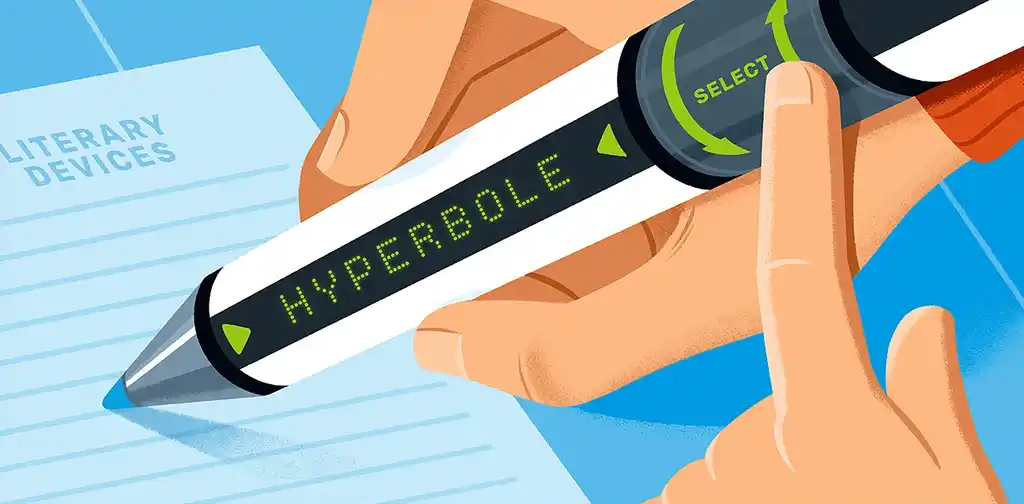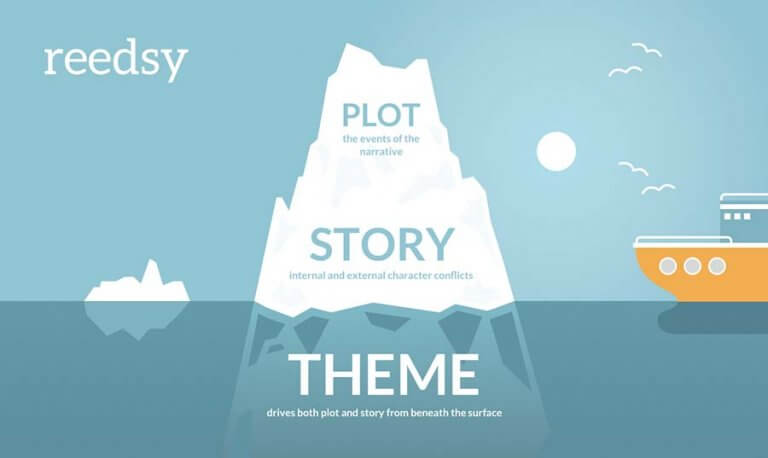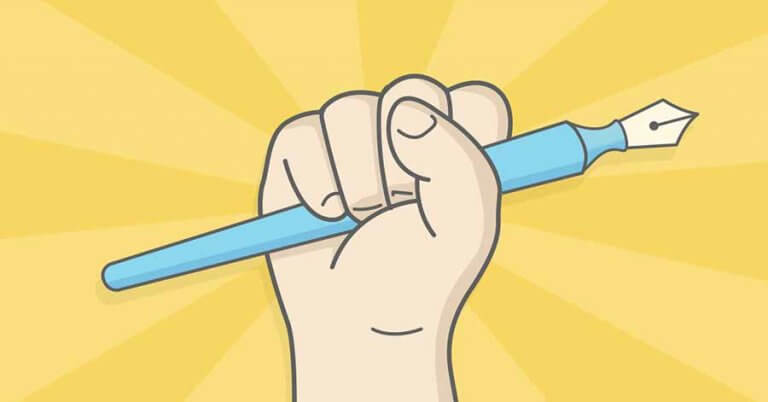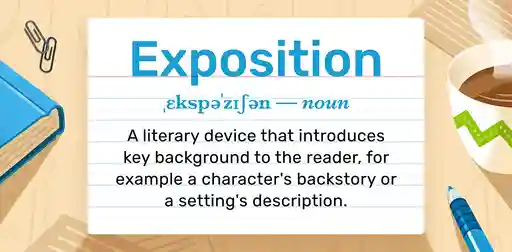Posted on Nov 06, 2019
What Is a Motif? Motifs Defined + 10 Illuminating Examples
About the author
Reedsy's editorial team is a diverse group of industry experts devoted to helping authors write and publish beautiful books.
More about the Reedsy Editorial Team →Martin Cavannagh
Head of Content at Reedsy, Martin has spent over eight years helping writers turn their ambitions into reality. As a voice in the indie publishing space, he has written for a number of outlets and spoken at conferences, including the 2024 Writers Summit at the London Book Fair.
View profile →Let's admit it: “What is a motif and how do you use it?” is a much less sexy question than, “What’s your book about?”
But it’s just as necessary. If the theme of a book is its heartbeat, then motifs are the vessels that keep the blood coursing through the narrative. Among other things, motifs in literature add depth to your writing and steer readers toward its central messages.

FREE RESOURCE
Literary Devices Cheatsheet
Master these 40+ devices to level up your writing skills.
In this post, we’ll look at what a motif is (and what it's not), examine motif examples in action, and explore how you can incorporate motifs into your own writing.
What is a motif?
A motif is a recurring narrative element with symbolic significance. If you spot a symbol, concept, or narrative construction that surfaces repeatedly in the text, you’re probably dealing with a motif. They must be related to the central idea of the work, and they always end up reinforcing the author’s overall message.
But how can you tell which ones are motifs? Remember that you must be able to connect a motif to the "big ideas" in a book. Just because the narrator mentions a particular pair of shoes a few times, doesn’t necessarily mean that it’s a motif — unless the author makes a point of tying it to a bigger question of, let’s say, escape and freedom. (Don’t worry — we’ll provide more concrete motif examples in a bit!)
Since they’re repeated throughout a text, motifs are also very traceable. As you're trying to figure out the motifs of a given work, it might be useful to think of them as having a trail of purposeful clues. The author plants these breadcrumbs so that the reader can better work out the ideas behind the work — and its overarching point.
That brings up our next question: how do motifs relate to themes? Luckily, we've got the answer for you right here! Read on to learn more about the subtle distinctions between motif and theme, as well as motif and symbol.
Motif vs. theme: Motifs support a book's theme
The theme of a book is generally considered to be the core meaning behind a story — in other words, its soul. Themes are almost always universal, and they usually illuminate something about society, human nature, and the world.

In contrast, a motif reinforces the theme through the repetition of a certain narrative element. As you may have already guessed, themes and motifs in literature are devoted partners in crime.
To give you an easily digestible example, let’s take Shakespeare’s Sonnet 24. The theme of this sonnet is arguably that “love is skin-deep.” One of its main motifs is sight, which is made clear through the recurring imagery of eyes. It’s not a coincidence that the motif and the theme of a text are closely related: the one props up and strengthens the other, as you can see in the sonnet.
Motif vs. symbol: Symbols represent motifs
A symbol in a book is just like a symbol on a street sign: something recognizable that represents something abstract. In the US, for instance, eagles are a symbol of freedom. In The Hunger Games, the mockingjay is a symbol of revolution.
That said, when you see a symbol surface over and over again, chances are that it signifies a motif.
Let’s cut to The Great Gatsby, a classic vessel of symbolism, to illustrate this. F. Scott Fitzgerald uses the Valley of Ashes — a barren wasteland between East and West Egg — as a symbol to represent the waste and moral decay of the elite. This is a part of the book’s bigger motif of wealth and finance, which recurs through several ideas — among them, Gatsby’s parties, the extravagance of the both West and East Eggs, and Daisy’s voice that is described as “full of money.” That, in turn, reinforces one of the book’s major themes about the corruption of the American Dream.
To sum it up, here’s a quick chart for you:
 Now that you have a better sense of what is a motif (and what isn't one), let’s see some more of them in action!
Now that you have a better sense of what is a motif (and what isn't one), let’s see some more of them in action!
🖊️
Which contemporary author are you?
Find out which of today's greats is your writerly match. Takes one minute!
10 motif examples in literature
We've defined a motif and talked about many interpretations of its definition. So what are some motif examples in great books that you might have read before? Let's take a look at 10 of them — and the themes they reinforce.
1. Jane Eyre by Charlotte Brontë
Story: An orphaned girl becomes embroiled in a complicated relationship with her employer, a broodingly mysterious man named Mr. Rochester.
Motifs: Food (nourishment and generosity), portraits (unconscious and suppressed feelings), eyes (insight)
2. Harry Potter by J.K. Rowling
Story: A young boy goes to wizarding school, makes friends, and tries to defeat an evil wizard.
Motifs: Scar (destiny and the power of love), "muggle-borns" vs. "purebloods" (racism and tolerance)
4. Lord of the Rings by J.R.R. Tolkien
Story: A fellowship must destroy an all-powerful ring and the Dark Lord exploiting it to conquer Middle-earth.
Motifs: Light and dark (the battle of good versus evil), song and singing (friendship and unity)
5. The Great Gatsby by F. Scott Fitzgerald
Story: In the summer of 1922, a rich man tries extravagantly to win the girl of his dreams.
Motifs: Wealth and finance (the corruption of the American Dream), time and clocks (our relationship with the past and future)
6. Catcher in the Rye by J.D. Salinger
Story: In New York City, a teenage boy seeks to find himself while coming to terms with his past.
Motifs: Ducks (the necessity of change), death (mortality)
7. The Wizard of Oz by Frank L. Baum
Story: After a girl and her dog are swept into the magical land of Oz, she must go on a journey to find her way home.
Motifs: The Yellow Brick Road (the journey of life), Oz (misleading appearances and the corruption of power)
8. Hamlet by William Shakespeare
Story: Tormented by grief, a young man hunts for the truth to avenge his dead father.
Motifs: Ears (the unreliability of truth), birth and death (ephemerality of existence)
9. A Tale of Two Cities by Charles Dickens
Story: Two men fall in love with the same woman in the middle of the French Revolution.
Motifs: Doubles (nature of duality), digging (uncovering the hidden)
10. Lord of the Flies by William Golding
Story: After a plane crashes, a band of boys must survive on a deserted island.
Motifs: Fire (connection to technology and civilization), religious allegory (moral truth)
PRO-TIP: Short stories often have strong motifs and themes. To see how this works for yourself, check out 21 of the best short story collections in the literary canon.
Remember: a book can have many motifs
As you can tell, most books have more than one motif. Authors spend a lot of time perfecting their central messages and want to make sure that you know exactly what they are, which is why they turn to multiple motifs.
Fortunately, this makes it easier for you to analyze a text. Ask yourself:
- Are there any patterns that repeat in this book — whether they're ideas, symbols, or plot structures?
- Do these patterns have anything to do with a central theme or message of the book?
- If so, how do they illuminate and relate to the theme?
Not too difficult, right? Of course, now that you know what a motif is, you might be wondering how to write motifs into your story — which brings us to the next section.
How to use motifs in your story

You might say, this is all easier said than done! But while it's not exactly a piece of cake, it's far from impossible to write motifs in literature. Here are four ways to help you apply them in your novel or short story.
Option 1: Plan it
Planning your motifs is as simple as planning your themes — and then taking it one step further. Motifs generally revolve around “big picture” concepts, so you need to first examine your central ideas and characters.
Ask yourself: What do you want readers to associate with them? How can you represent them through symbols? If one of your themes has to do with death, for instance, think about all the ways that you can sear it into your readers' minds (by, say, having one of your characters encounter a dead animal and feel great sorrow for it).
The next step is to incorporate it into your book. Even after you know what your motifs are going to be, you need figure out how to make them recur.
If you create a detailed outline before writing your first draft, you can probably spot the key events in your novel that are relevant to your theme. For instance, one of the most famous motifs in all of literature is the mockingbird in To Kill a Mockingbird — it's so important that it's right there in the title of the book.
Comparatively speaking, the mockingbird itself doesn’t appear too often in the book. But because it was woven into the narrative at the right moments, it becomes a powerful representation of innocence and goodness. Likewise, your goal should be to tie your motif into your story in a natural yet compelling manner, at the right moments, not every possible moment. Avoid heavy-handed symbolism at all costs — your readers are smarter than that!
Option 2: See if any develop naturally
It’s not always necessary to plan out your entire novel down to the last motif. Sometimes you just need to write a draft and trust that your writerly brain will supply the right substance.
For instance, you might be writing a story about a character working through grief and notice yourself going back repeatedly to the character’s flute. Many motifs in literature are born organically this way: the writer realizes that they need to represent a major theme, and their subconscious finds a way to deliver it. In this case, it might be because playing the flute helps your character forget their pain and focus on joy, or because it reminds them of the person they've lost.
It’s always useful to connect the dots and figure out why your subconscious wanted to bring up this idea or symbol in relation to this character or theme. Once you determine the purpose, the motif will serve the bigger picture, and you can see it through to the end of your draft in a satisfying way.
If you need help developing your characters to that point, click here for some character development exercises and here for a free character profile template.
Option 3: Freewrite
If you’re itching to nail down your motifs before you start writing, but aren’t feeling inspired, consider freewriting. This is the practice of writing down all of your thoughts without stopping for a certain period of time — usually between 10-20 minutes.
To tease out your motif, try to start off by freewriting about your theme. When you’re done, go back and see what ideas or symbols surface repeatedly in the exercises. You might be surprised at what your mind produces when the block of self-editing is removed!
4. Know that motifs are here to help, not hinder
Like themes, motifs are there to help you write your book (and help readers understand them)! If you let them, motifs will add a valuable layer of depth to your story. So don't be afraid of them — let the motifs come to you naturally as you're writing or planning. You'll find that your themes will thank you for it.









1 response
c money says:
04/12/2019 – 13:28
fiyah!